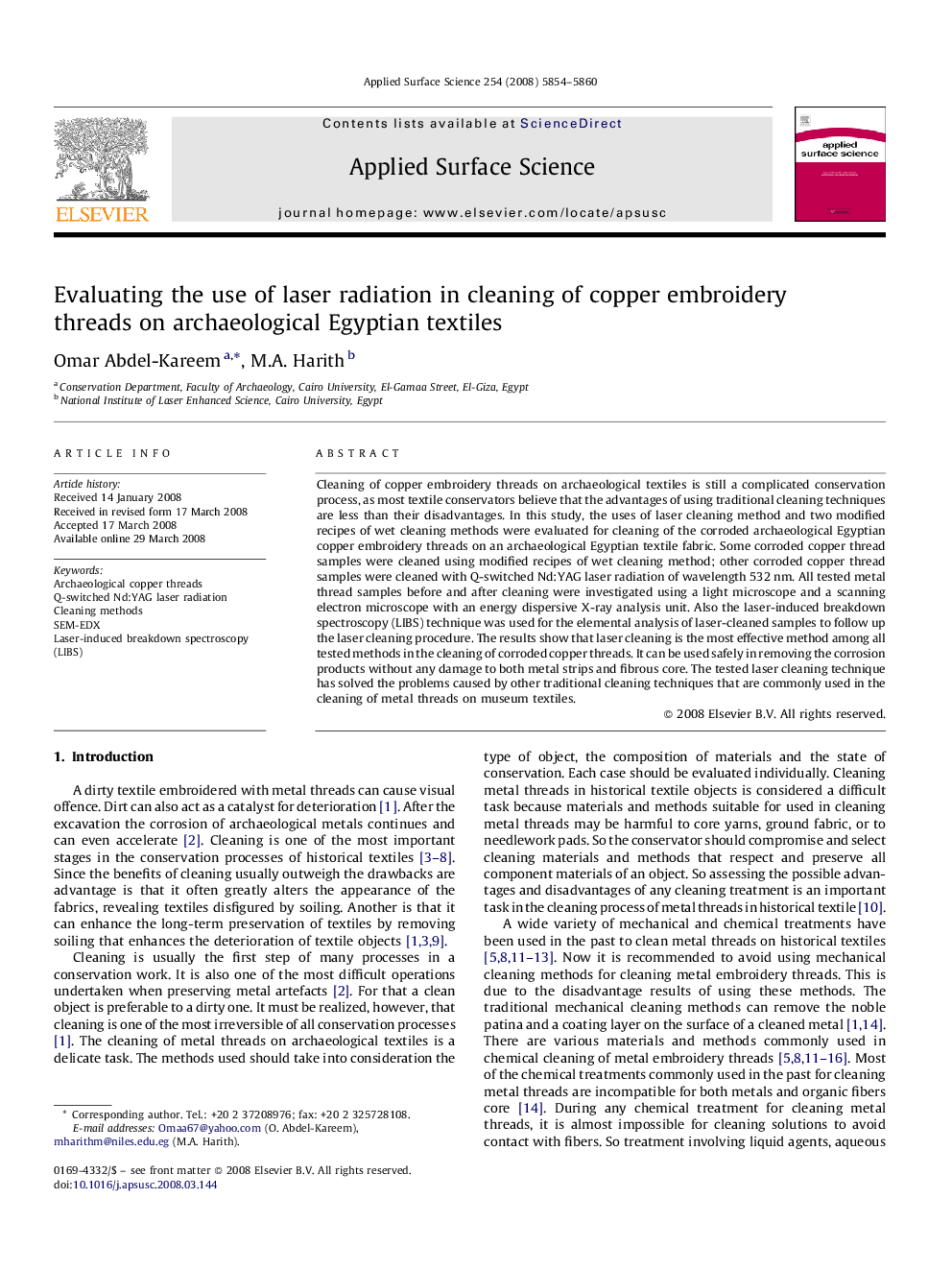| Article ID | Journal | Published Year | Pages | File Type |
|---|---|---|---|---|
| 5362388 | Applied Surface Science | 2008 | 7 Pages |
Abstract
Cleaning of copper embroidery threads on archaeological textiles is still a complicated conservation process, as most textile conservators believe that the advantages of using traditional cleaning techniques are less than their disadvantages. In this study, the uses of laser cleaning method and two modified recipes of wet cleaning methods were evaluated for cleaning of the corroded archaeological Egyptian copper embroidery threads on an archaeological Egyptian textile fabric. Some corroded copper thread samples were cleaned using modified recipes of wet cleaning method; other corroded copper thread samples were cleaned with Q-switched Nd:YAG laser radiation of wavelength 532Â nm. All tested metal thread samples before and after cleaning were investigated using a light microscope and a scanning electron microscope with an energy dispersive X-ray analysis unit. Also the laser-induced breakdown spectroscopy (LIBS) technique was used for the elemental analysis of laser-cleaned samples to follow up the laser cleaning procedure. The results show that laser cleaning is the most effective method among all tested methods in the cleaning of corroded copper threads. It can be used safely in removing the corrosion products without any damage to both metal strips and fibrous core. The tested laser cleaning technique has solved the problems caused by other traditional cleaning techniques that are commonly used in the cleaning of metal threads on museum textiles.
Related Topics
Physical Sciences and Engineering
Chemistry
Physical and Theoretical Chemistry
Authors
Omar Abdel-Kareem, M.A. Harith,
